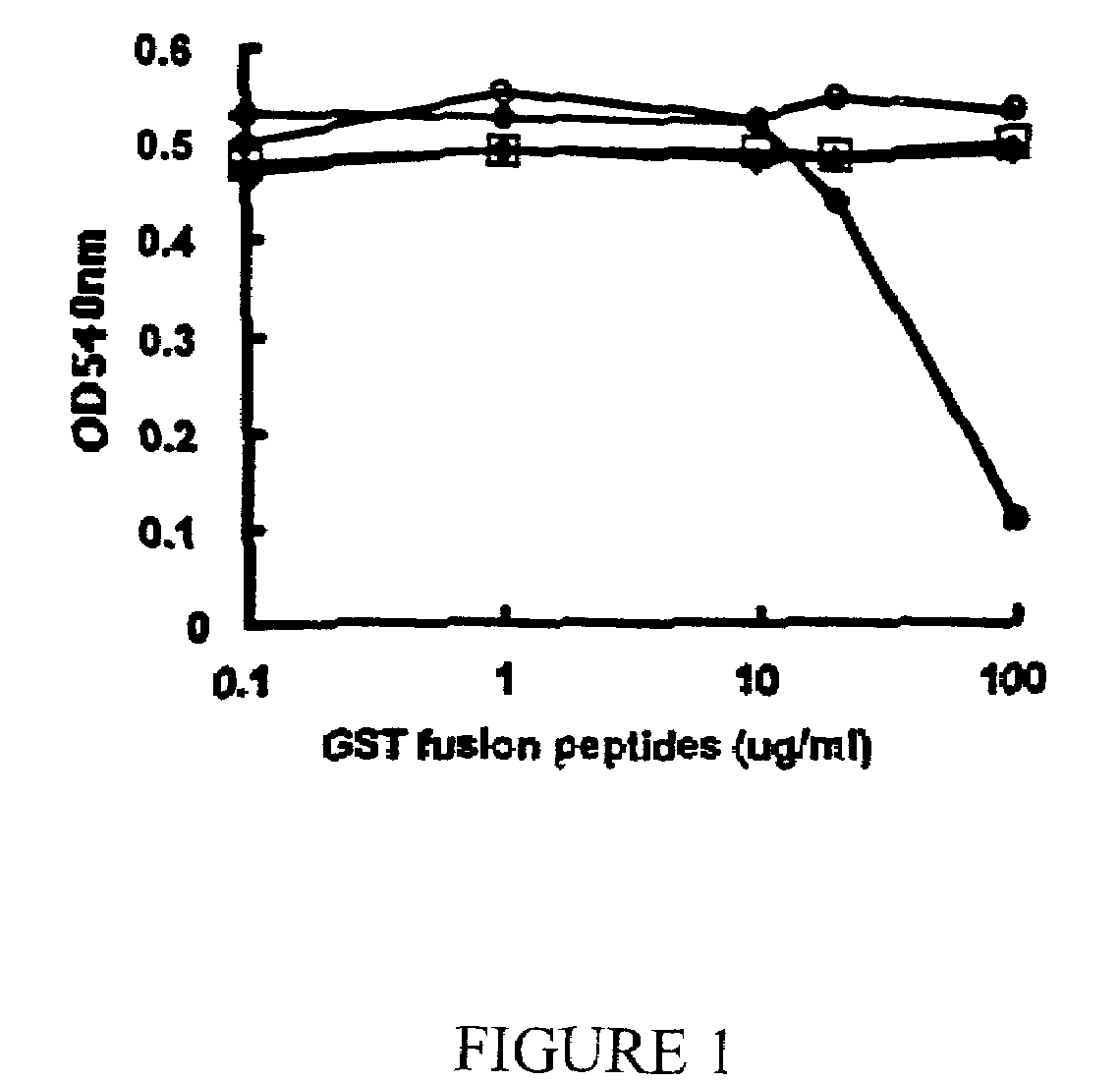VEGFR-3 inhibitor materials and methods
a technology of vegfr-3 and inhibitor materials, which is applied in the direction of growth factor/regulator receptors, drug compositions, peptides, etc., can solve the problems of no anti-lymphangiogenic agent is known to be in clinical development, and difficult to manage metastatic spread of cancer to disparate sites. , to achieve the effect of reducing systemic toxicity, reducing or eliminating regrowth of tumors,
- Summary
- Abstract
- Description
- Claims
- Application Information
AI Technical Summary
Benefits of technology
Problems solved by technology
Method used
Image
Examples
example
[0229]The following example provides experimental protocols for the production of exemplary peptides of the present invention. Briefly, phage-display libraries of random peptides were used to isolate specific peptides that possessed VEGFR-3 binding capacity. Through iterative rounds of bio-panning a novel peptide CGYWLTIWGC (SEQ ID NO: 35), which competes with VEGF-C binding to VEGFR-3 expressed on BaF3 cells was identified. This peptide is an effective antagonist of VEGF-C binding. The methods and results are described in further detail below.
Phage Display Peptide Libraries
[0230]In vitro biopanning using phage display libraries of random peptides was used to isolate specific peptides of the present invention (Koivunen et al., Methods Mol. Biol. 129:3-17, 1999; Koivunen et al., Biotechnol., 18(8):768-74, 1999). The synthetic inserts were synthesized as single-stranded degenerate oligonucleotides. The sequence of the template was:[0231]5′-CACTCGGCCGACGGGGCT(NNK)xGGGGCCGCTGGGGCCGAA-3′...
PUM
| Property | Measurement | Unit |
|---|---|---|
| temperature | aaaaa | aaaaa |
| optical density | aaaaa | aaaaa |
| pH | aaaaa | aaaaa |
Abstract
Description
Claims
Application Information
 Login to View More
Login to View More - R&D
- Intellectual Property
- Life Sciences
- Materials
- Tech Scout
- Unparalleled Data Quality
- Higher Quality Content
- 60% Fewer Hallucinations
Browse by: Latest US Patents, China's latest patents, Technical Efficacy Thesaurus, Application Domain, Technology Topic, Popular Technical Reports.
© 2025 PatSnap. All rights reserved.Legal|Privacy policy|Modern Slavery Act Transparency Statement|Sitemap|About US| Contact US: help@patsnap.com

